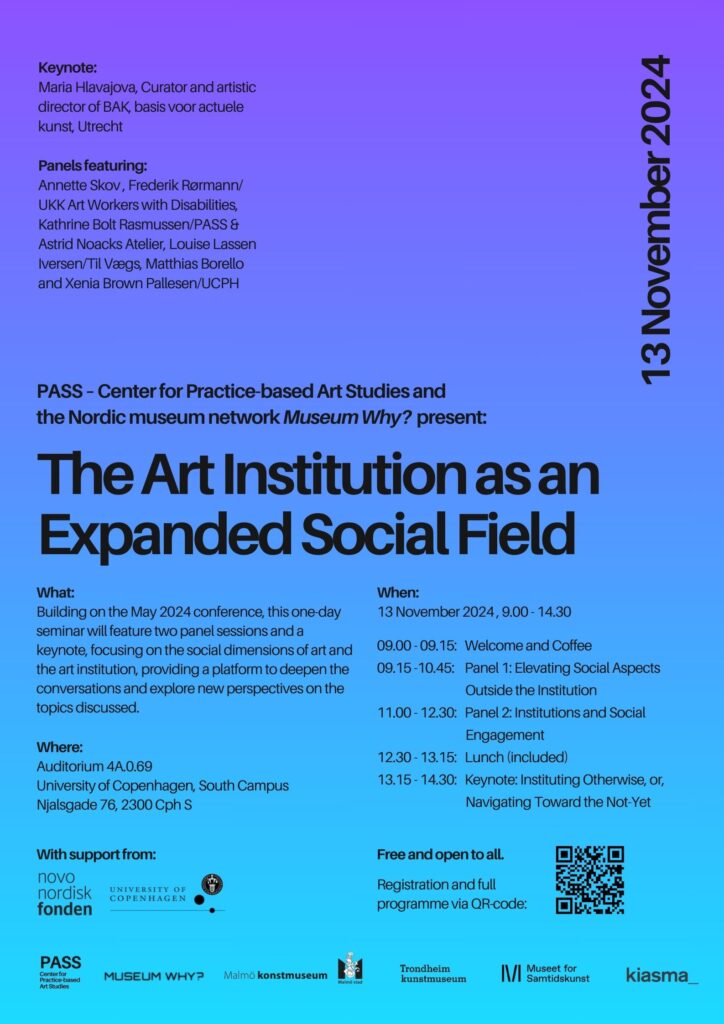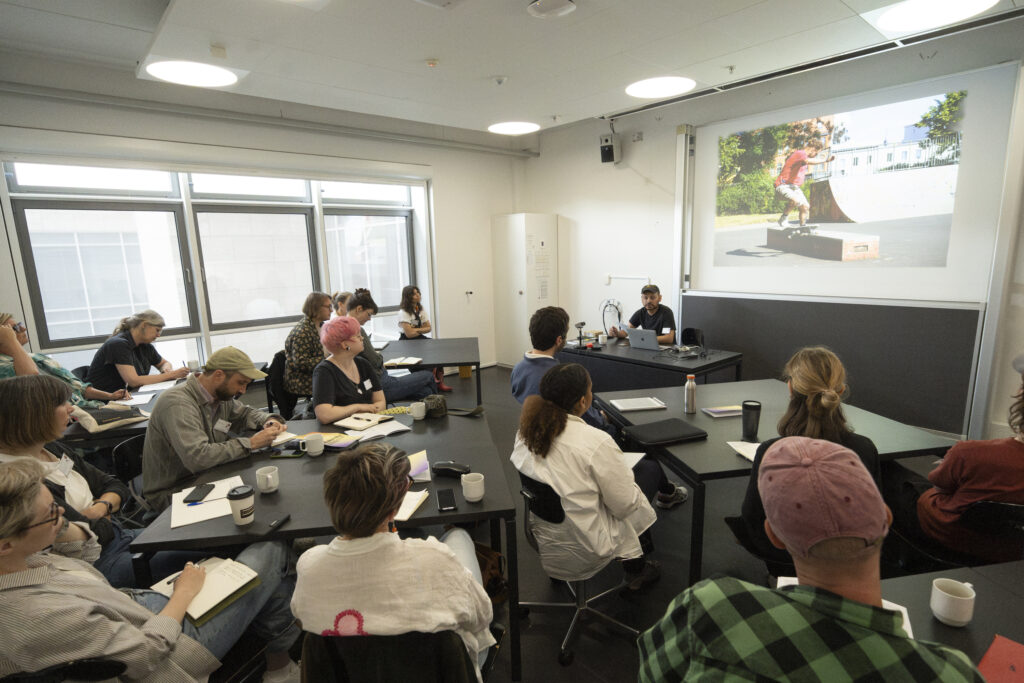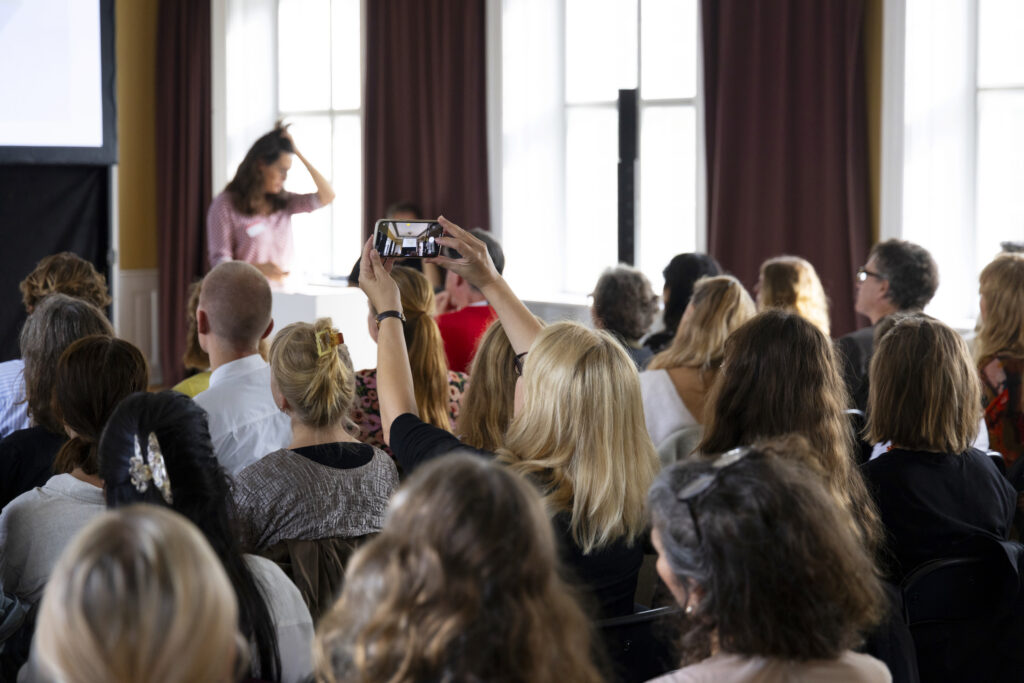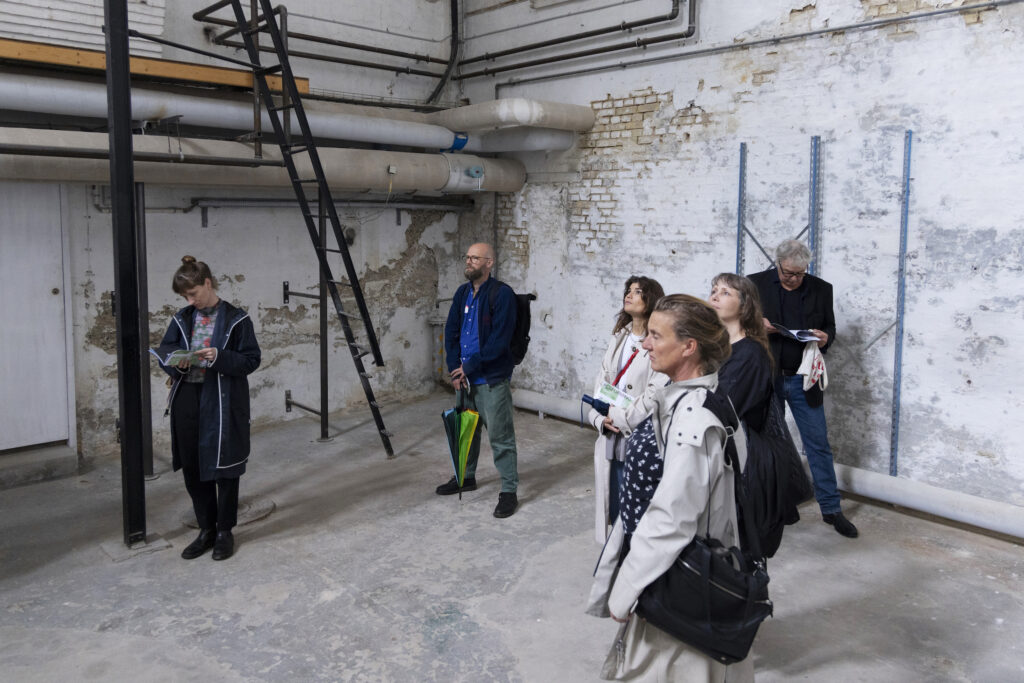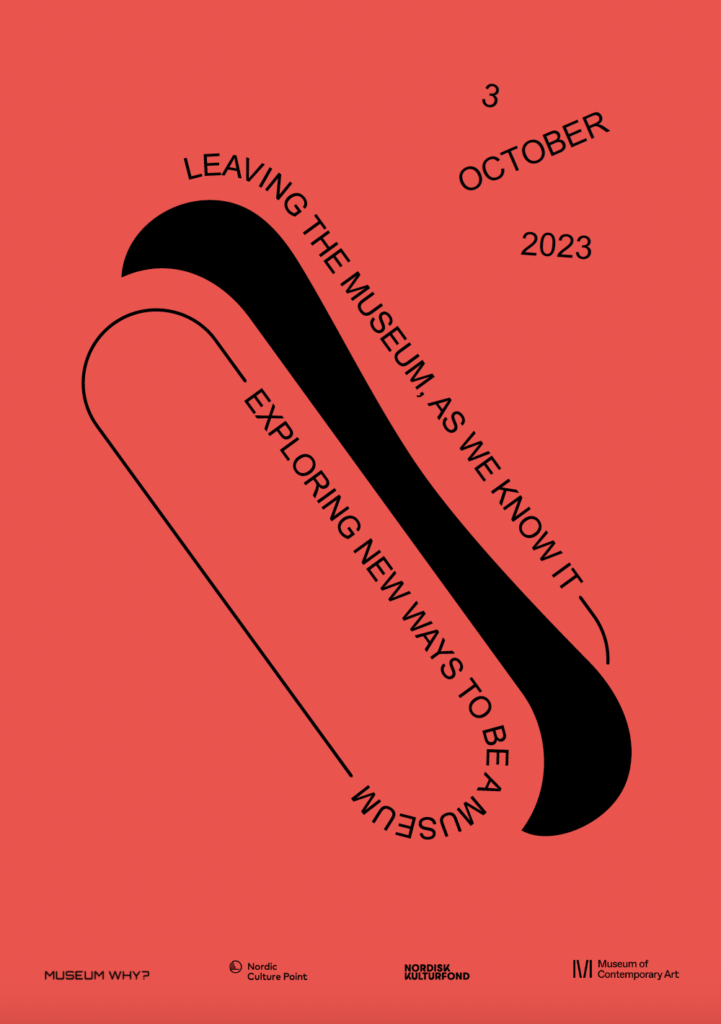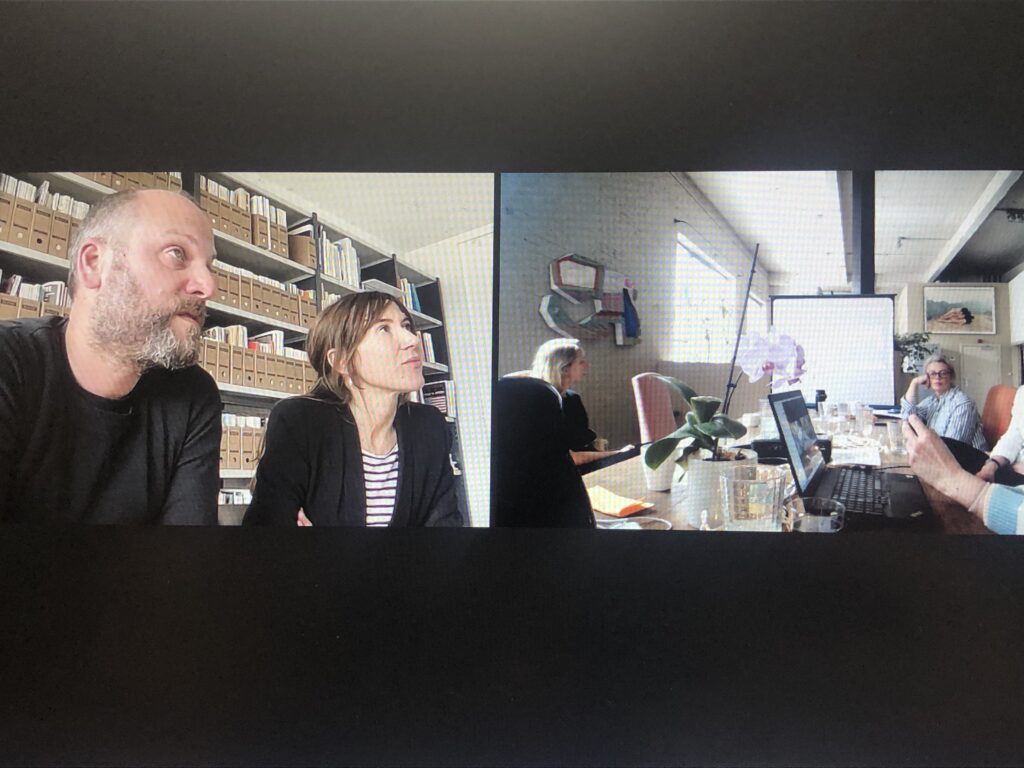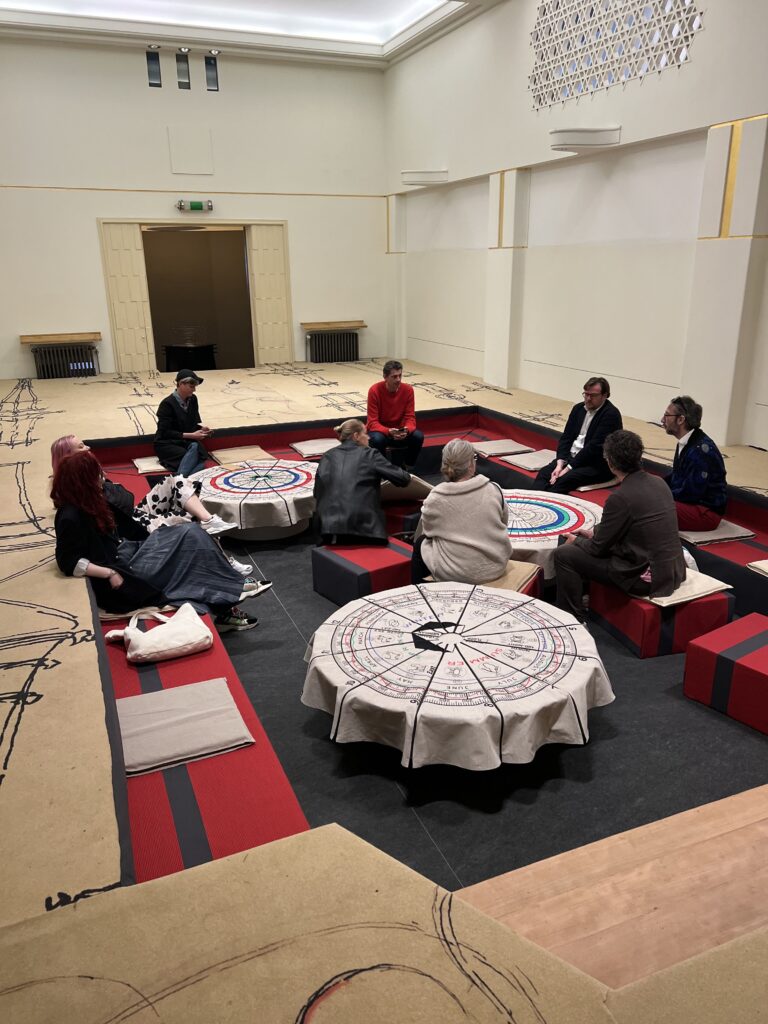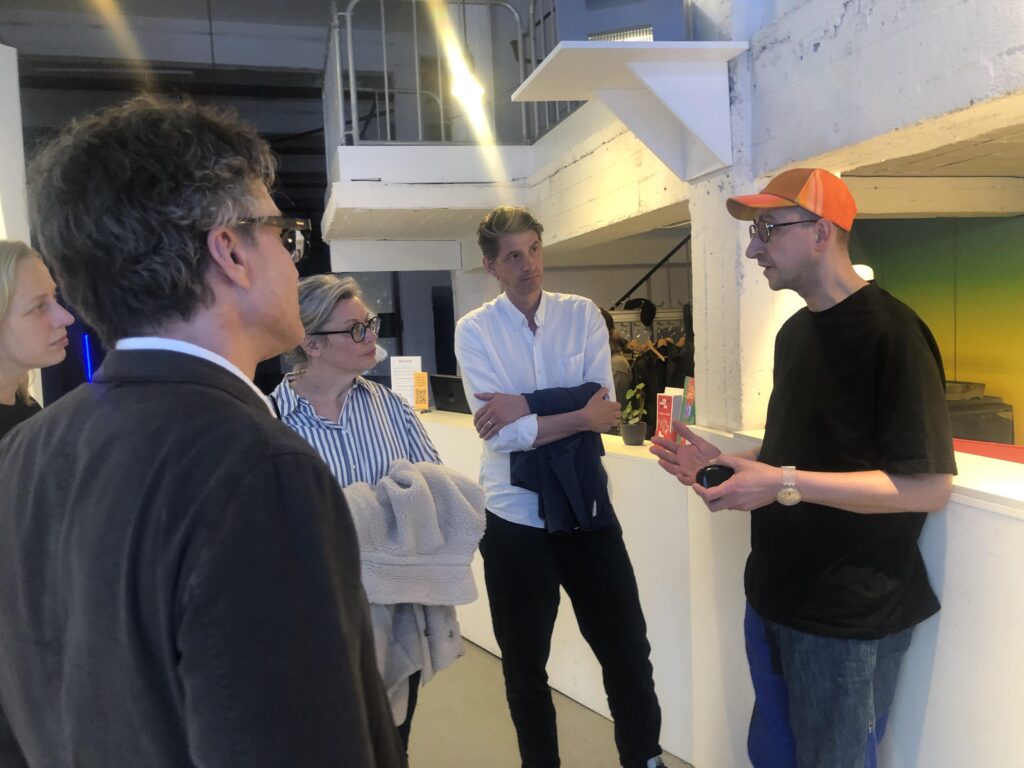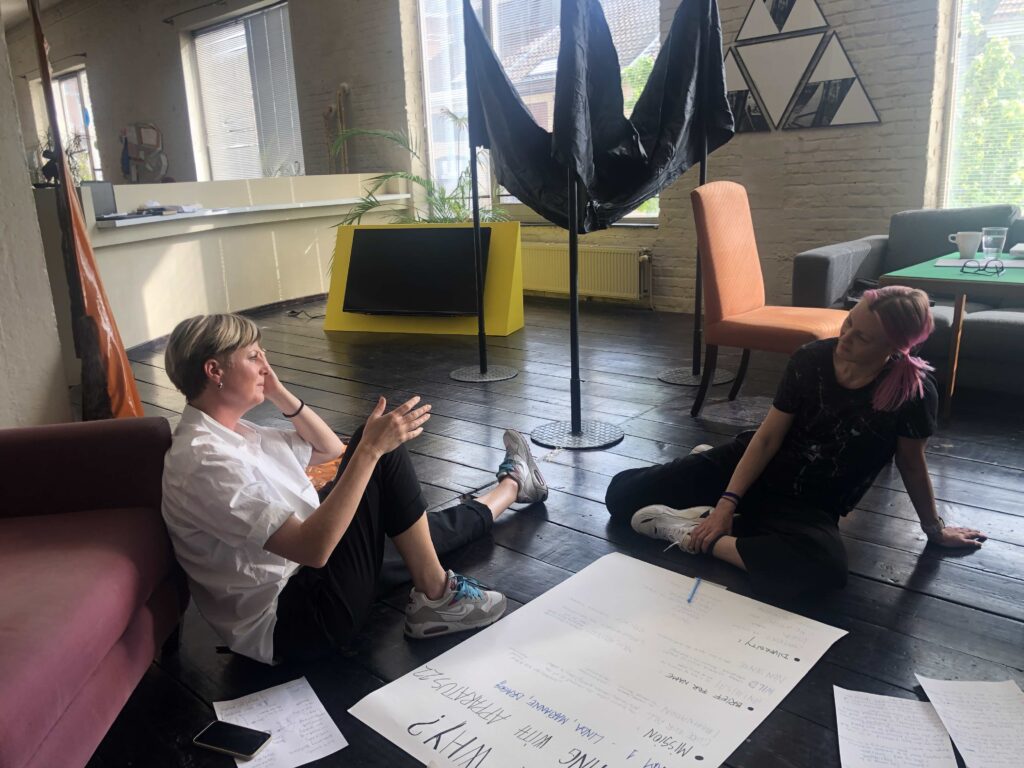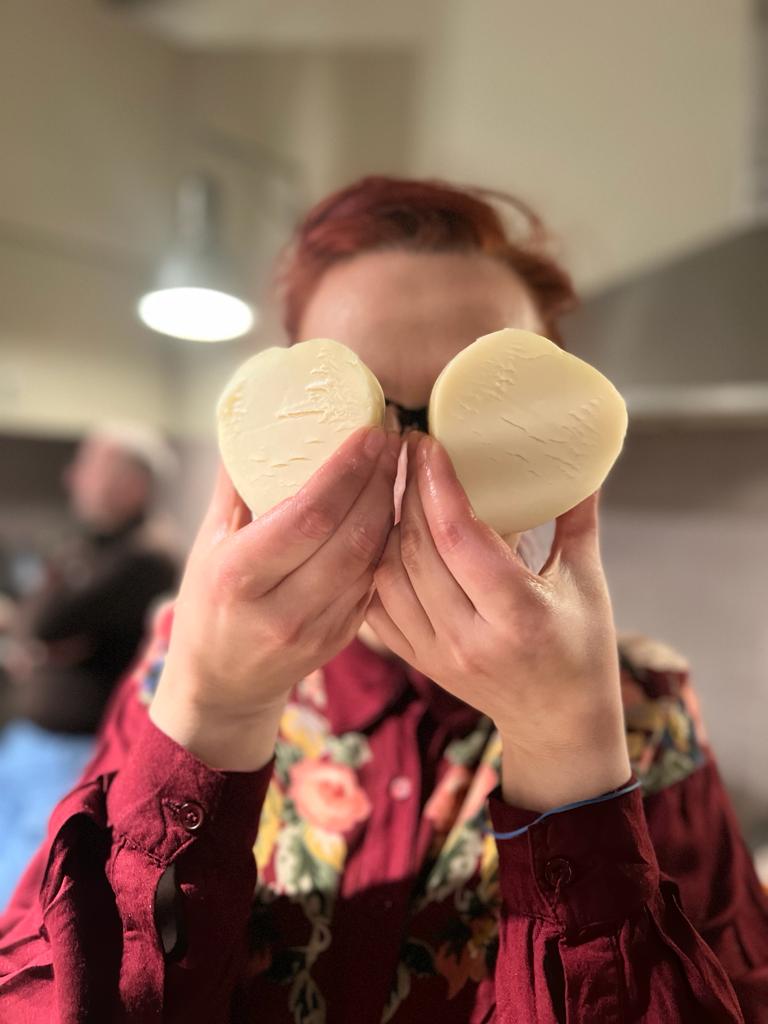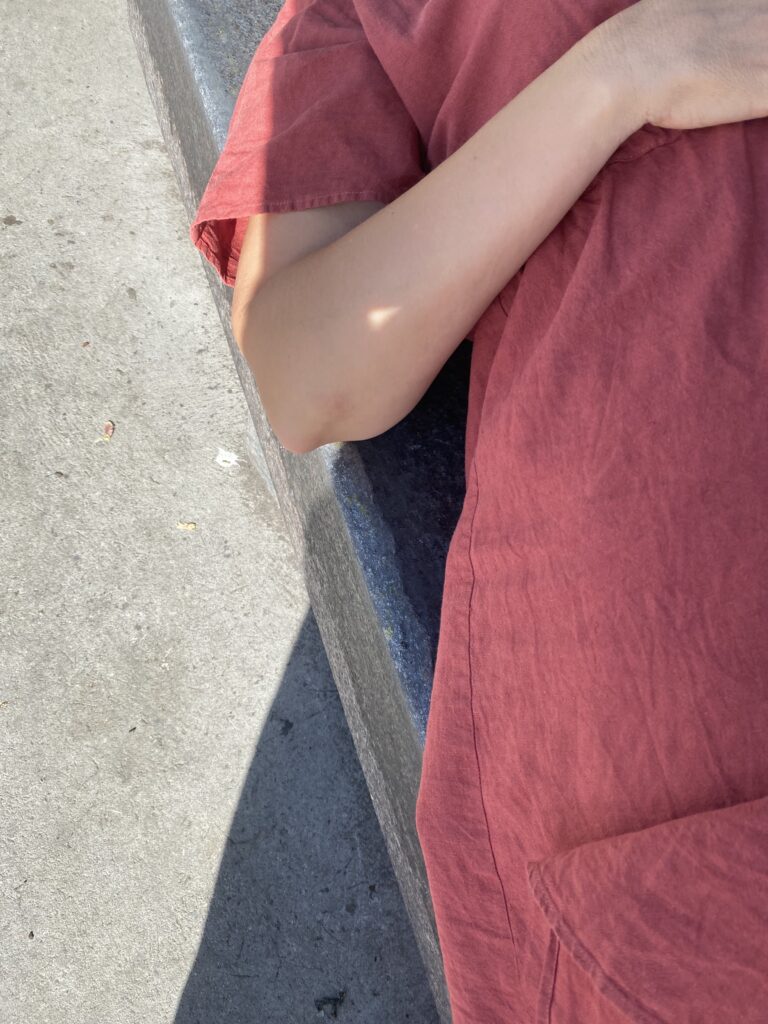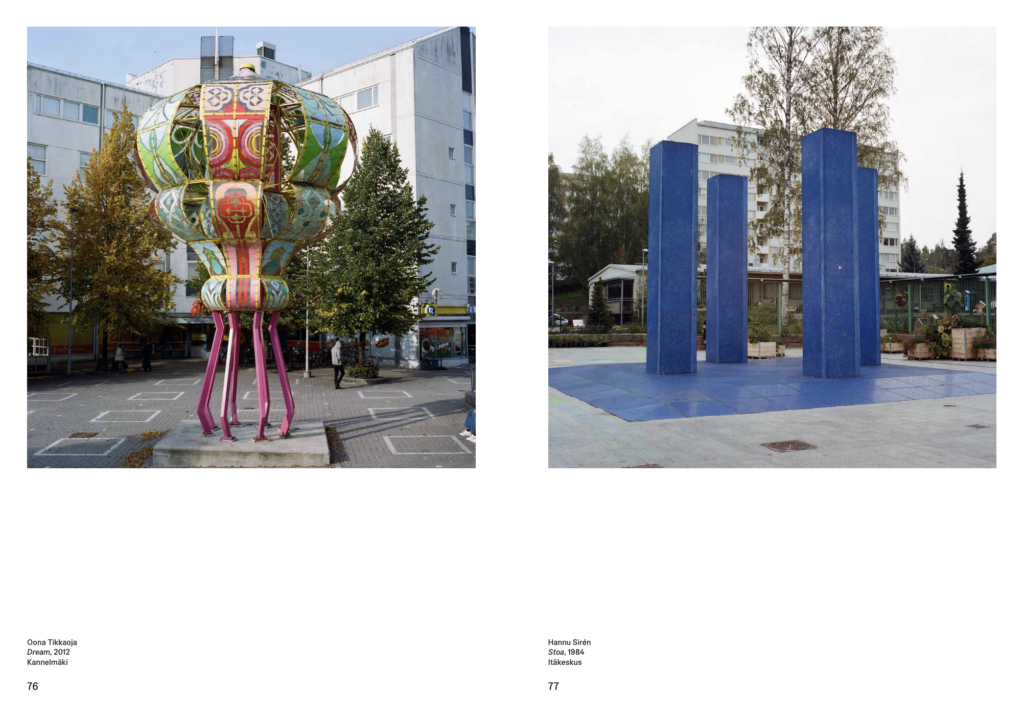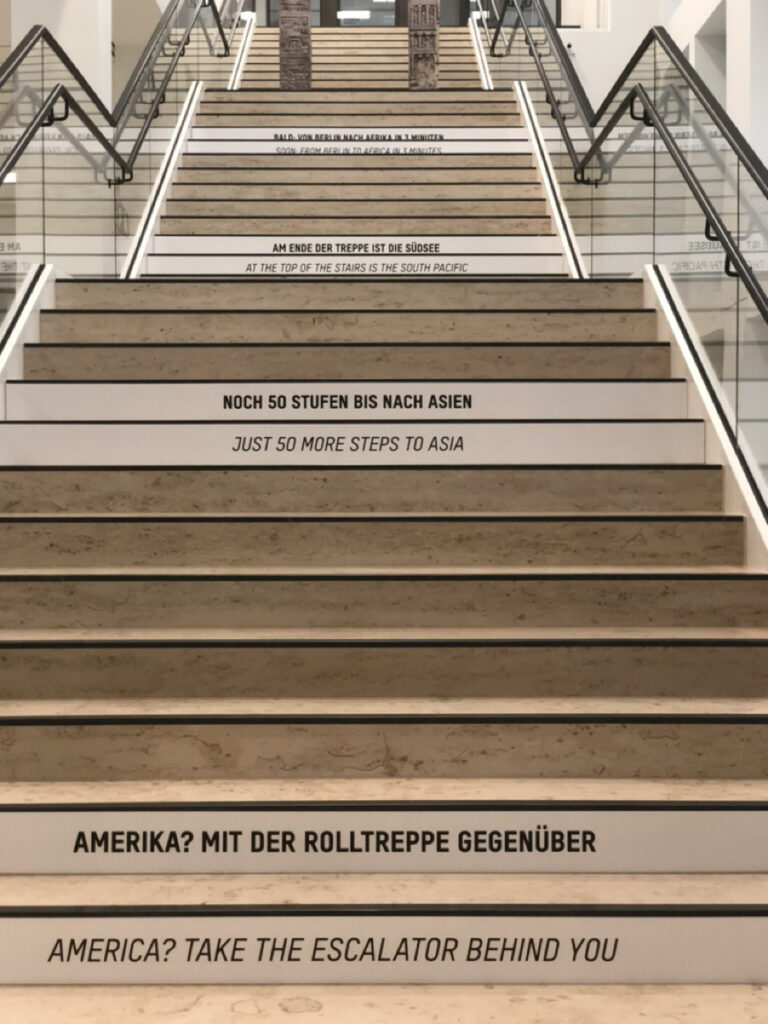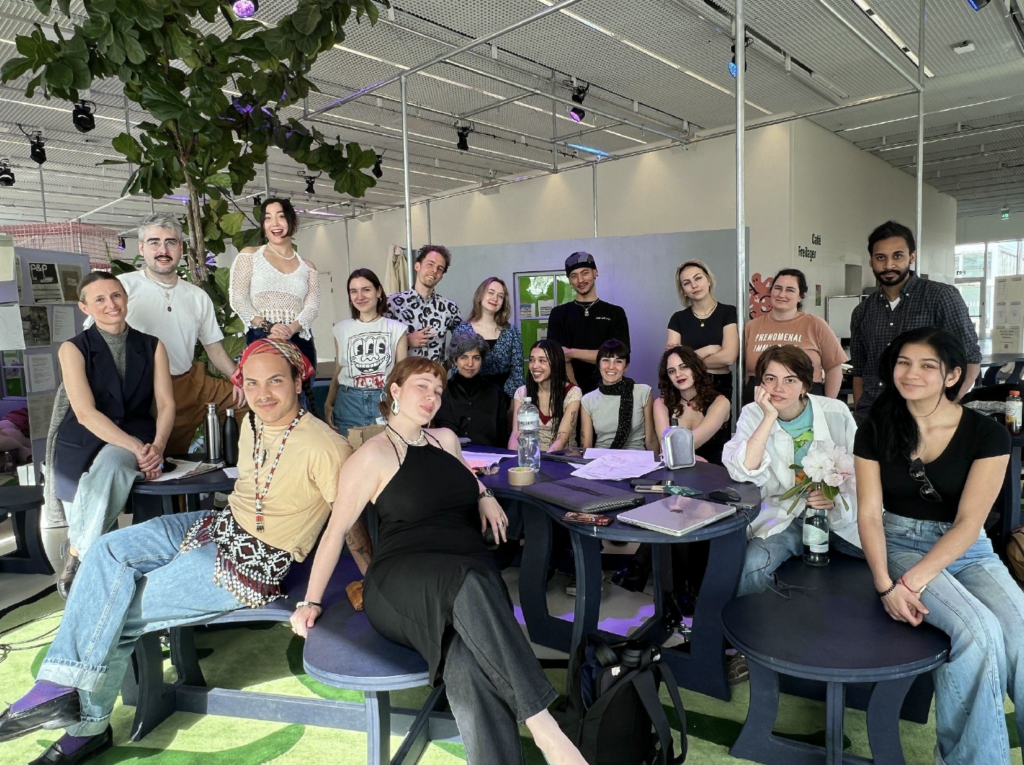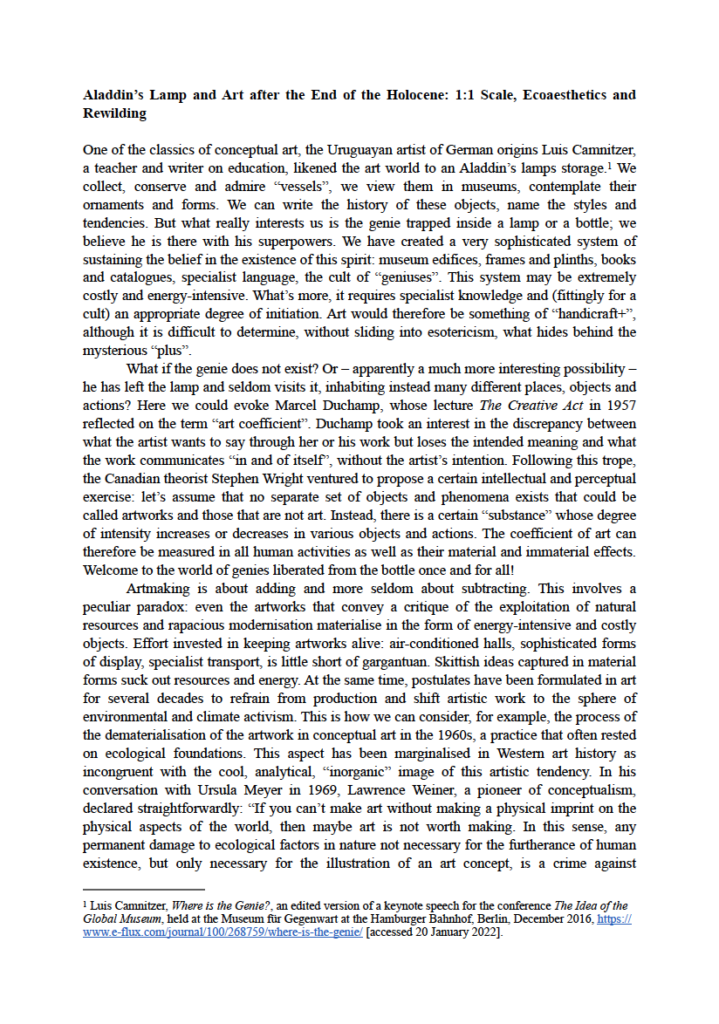MUSEUM WHAT? HOW? WHO? WHERE? WHEN?
In late May 2024, scholars, curators, museum professionals, and artists met at the University of Copenhagen to discuss the past, present, and future of museum practices. With a starting point in what the conference organizers described as a museum crossroads, the conference was to discuss the challenging questions of “why we have art museums and how we might create more impactful, inclusive, and relevant institutions”. Throughout the conference, a plenitude of suggested answers – and critiques of them – came from around 50 speakers. Though one could argue that museums have always been at various crossroads, ICOM’s new museum definition revitalizes the question of museums’ role, significance and responsibility in society. Similarly, wars and crises around the globe call for new forms of action from public museums, and the current wars in Ukraine and Palestine were among the many points of references across the conference presentations.
The conference made evident that it is impossible to talk about the art museum and instead presented a plethora of understandings, visions, and dreams for art museums. Just a brief look at the museum network Museum Why? – one of the organizers of the conference – shows the breadth of art museums and the many crossroads they face. The ambition of the network is sharing and developing new perspectives on the art museum of the 21st century. In a panel with the network partners, director at Museet for Samtidskunst (DK) Christian Skovbjerg Jensen, Chief Curator at Trondheim Kunstmuseum (NO) Marianne Zamecznik, Chief Curator of Collections, Kiasma (FI), Saara Hacklin, and director at Malmö Konstmuseum (SE) Kirse Junge-Stevnsborg presented their institutional challenges: From the maintenance, accessibility, and expansion of large collections (Kiasma and Trondheim Kunstmuseum) to being a museum without a physical site (Museet for Samtidskunst) and the constant task of meeting new audiences (Malmö Konstmuseum).
In many ways, it is just as impossible to grasp the everything of a conference in a few pages as it is to describe the everything of art museums in a single conference. The following pages will, however, try to give an outline of the three days of generous research dissemination, practice presentations, and discussions.
INSTITUTIONAL FLIP-FLOPPING
Curator, artist, writer, and educator Dr. Paul O’Neill opened the conference with the rhetorical question: “What if we already know what we can and must do?” In other words, what if we already have the models for more inclusive, ethically viable, and artistically interesting institutions and only lack the method of how to implement the models? O’Neill’s own suggestion is so-called “institutional flip-flopping”, or what he terms “para-hosting”. “Para-hosting” is a playful approach to diverting the guest-host paradigm of museums in which the museum becomes the guest by letting other agents in the art field take over their institutions as hosts. In this way, small-scale institutions that are working with new, processual ways of curating can affect established museums and institutions.
The radical “flip-flopping” that O’Neill proposed pointed to the delicate question of how to translate critical knowledge into changed practices across institutional scales, and “para-hosting” became a recurrent reference point at the conference. At the last keynote, associate professor and artist Martha Fleming concluded with reference to O’Neill’s term:
“There is in this room a huge body of knowledge. We know enough, we know how to bring about radical change. But this knowledge is not being articulated fully, it is not published or shared in a coordinated and accessible way. It is not evaluated in a way that encourages institutions to take it up and operationalize it. […] We will need to get to the point where we are both hosts and guests, and in fact we are all hosts and guests.”
Fleming’s keynote focused on artists working inside museums and on museums as places of both employment and collaborative resistance. From listening to O’Neill and Fleming’s keynotes, it became clear that there seems to be a challenge in making knowledge from artists, curators, and smaller exhibition venues accessible to museums at large. The work of changing the institutions on a smaller scale is happening “out there” as they both could show, yet the larger structural changes are still needed.
REMOVE US FROM MEMORY
In a panel on “Institutions of Resistance”, research fellow at the University of Tartu Rebeka Põldsam discussed the museum landscape in Estonia and in particular the Kumu Art Museum’s response to crisis, wars, and social tensions. Whereas the museum has, in recent years, re-examined nationalist projects and increased a focus on colonial history, feminism, and queer empowerment in the exhibition program, the museum’s approach to current conflicts is more blurred. Põldsam highlighted, among other things, the divergence in the museum’s reactions to the wars in Ukraine and Gaza. Whereas Kumu’s website stated “Stop the war” in relation to the former, the museum has not made any public announcements in connection to the latter. This discrepancy points to the questions of who a national museum represents, and who they are intended for, as Põldsam reminded the audiences.
Following Põldsam’s presentation, curator, artist, and artistic director of de Appel Lara Khaldi presented her article “We’re still alive, so remove us from memory. Asynchronicity and the Museum in Resistance”. The article is part of Khaldi’s research book The Impossible Museum: Palestinian Museums and Renegade Objects (2021). With Khaldi’s presentation, the focus shifted from the existing (national) museums to the impossible museums such as those of Palestine and their potential for resistance:
“The museum in resistance is not as we imagine: a material structure and archive of a past struggle of emancipation. It is rather the generative collective disintegration of this material in the struggle for forging collective myths. The museum in resistance is a museum outside of time, as time is always controlled by the hegemonic power. It is a museum which does not reserve a record nor a trace, but rather a shared knowledge in continuous circulation and transformation” (Khaldi 2021, 29).
These museums in resistance are not the old, classical buildings but in the actions and collective initiatives that resist hegemonic power; they resist historicizing (memory) by saying: “we’re still alive”.
Khaldi and Põldsam’s presentations thus also addressed urgent questions for the site of the conference. At the University of Copenhagen’s City Campus, Students Against the Occupation raised a tent camp on May 6 2024 to protest, among other things, the university’s investments in companies engaged in the Israeli settlements on the West Bank. Only a few hundred meters from the conference, on the South Campus, there was a smaller solidarity camp, and several of the activists attended Khaldi and Põldsam’s presentations. Likewise, the organizers of the conference made solidarity statements with the pro-Palestinian protests.
In general, the entanglement of museums and politics was a recurring theme throughout the conference. This was evident from two panels loosely structured around art museums and colonial histories. In one panel, researcher Anders Kold Nielsen addressed antiracist exhibition practices in Aotearoa; independent curator and PhD candidate Ginerva Ludovici discussed the work with colonial history in Italian museums and in particular at the Museum of Civilizations in Rome; and curator, researcher, and art historian Lucas Stübbe provided examples of not showing, or partially veiling, sensitive cultural objects in German museums. Together, the papers provided hands-on examples of how museums can work with difficult histories and objects. In another panel, artist and researcher Benazir Basauri Torres asked for radical care practices in artist-museum encounters; postdoctoral researcher Vibe Nielsen unfolded debates around diversity and inclusion at the Iziko South African National Gallery’s Our Lady exhibition (2016); and postdoctoral researcher Anna Vestergaard Jørgensen examined the Danish national gallery’s obligation (or lack thereof) to collect and exhibit art from the Faroe Islands and Greenland.
A DRIFTING MUSEUM
The conference also presented two performance lectures. Thereby, some of the artists that many of the presentations addressed implicitly (at least those addressing contemporary art museums) were also generously included in the conference. The transdisciplinary art collective Apparatus 22 that works between Brussels, Bucharest and SUPRAINFINIT utopian universe presented the works How close to hold the Mirror? and A most amazing offer. In the first, the audiences were asked to vote on answers to questions such as “Which words should be forbidden when evaluating collections of a museum?” (they could choose between the answers “asset, efficiency, harmony, forever, iconic, and investment”). The poll made space for a much needed laugh (and some head shaking) at the conference. In the second work, audiences were offered the acquisition of Apparatus 22’s work, but with two prices: a standard price and a discounted price where the museum committed to for example improving the conditions for artists working in the museum.
Another performance lecture was given by two of the American art collective Floating Museums’ founders: poet, songwriter and performer avery r. young and architect Andrew Schachman. Floating Museum is designed to challenge traditional ideas of museums and in accordance with its floating character the art collective both hosts other initiatives, groups, and artist and is hosted by other institutions, museums, and infrastructures. In the first part of Floating Museum’s performance lecture, young reversed the roles of the audience and himself by letting the audience perform a choreography and read the American poet Gwendolyn Brooks’ poem “We Real Cool” (1959) aloud. In the second part, Schachman discussed how to remain critical while simultaneously taking responsibility for the recognized and established institution Floating Museum has become.
MUSEUMS BEYOND COLLECTIONS
Throughout the conference’s many presentations, there was an acknowledgement of museums as spaces for a wide range of publics. In some panels, the question of “museum for who?” remained implicit, while the question of publics was addressed directly in others. In one panel, photographer and cultural practitioner Carlos Santos; PhD fellow Anna Provst, and PhD fellow Zenia Brown Pallesen presented papers on the important meeting between museum and (diverse) audiences. Their cases included: tensions between the skateboarding community of the Stephan Hessel Platz in Weimar and the Bauhaus the Museum; strategies of the future Vildmosemuseum in Brønderslev, Denmark; and how the habitual flows of interpretations and meaning, presented by the art institution, can influence dissemination practices and the audiences’ orientation.
The focus on publics call for a critical reexamination of collections as the raison d’etre of museums. This point was made by PhD fellow and curator Magnus Kaslov who discussed the problem of prioritizing collections and suggested that “museums are what they have platformed, not what they collect”. In other words, we risk overlooking important aspects of museums in the forms of performances, interventions, and events, if we only consider museums to be houses for collections.
In general, the conference presented a plenitude of topics, themes, and cases organized in keynotes, a partner’s panel, group panels, and individual paper presentations. Among the plurality of voices and the many suggestions presented for the future of museums, Benazir Basauri Torres proposed on the closing day of the conference that the collectivity of the conference attendees decided on one specific action to change museums. This request for a concrete outcome of the conference was left hanging in the air, and perhaps, there is a point in not choosing one answer to fit all museums. As the organizers Rasmus Holmboe, Nanna Balslev Strøjer, and Mikkel Bogh concluded in their final remarks: the museums need to stay in the conflicts. Despite the existing knowledge that was made available by both keynotes and paper presentations, there are no easy answers to the question of “Museum why?”. In fact, the “why” includes at least a “what?”, a “how?”, a “who?”, and a “where?” These are big questions, and it seems fit that the conference was the closing conference for the Museum Why? network and the opening conference for the Center for Practice-based Art Studies at the University of Copenhagen.
By Marie Finsten Jensen and Anna Vestergaard Jørgensen, Copenhagen, July 2024
Museum Why? Practice, Agency and Knowledge in the Art Museum took place from May 22 to May 24, 2024. The conference was a collaboration between the Nordic Art Museum Network, Museum Why? and PASS – The Novo Nordisk Foundation Center for Practice-based Art Studies, University of Copenhagen. Museum Why? is formed by Museet for Samtidskunst (DK), Malmö Konstmuseum (SE), Trondheim Kunstmuseum (NO), and Kiasma (FI) in collaboration with University of Copenhagen’s Research Centre Art as Forum (DK). The conference was organized by Rasmus Holmboe, Christian Hald Foghmar, Nanna Balslev Strøjer, Mikkel Bogh, Niels Christian Dinesen, and Marie Dyssel Stets.
